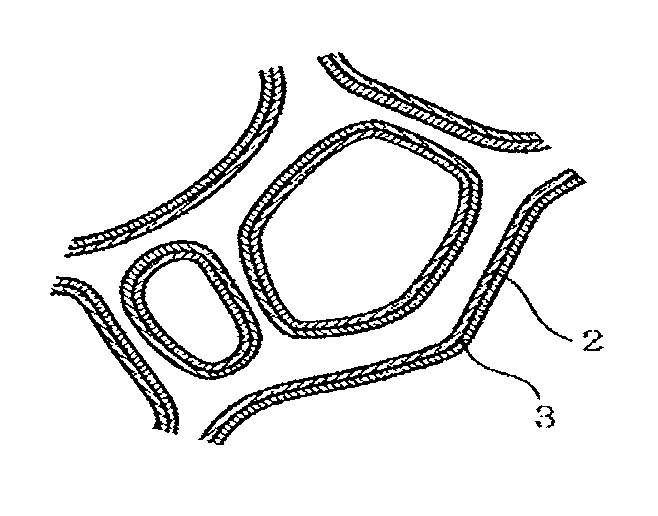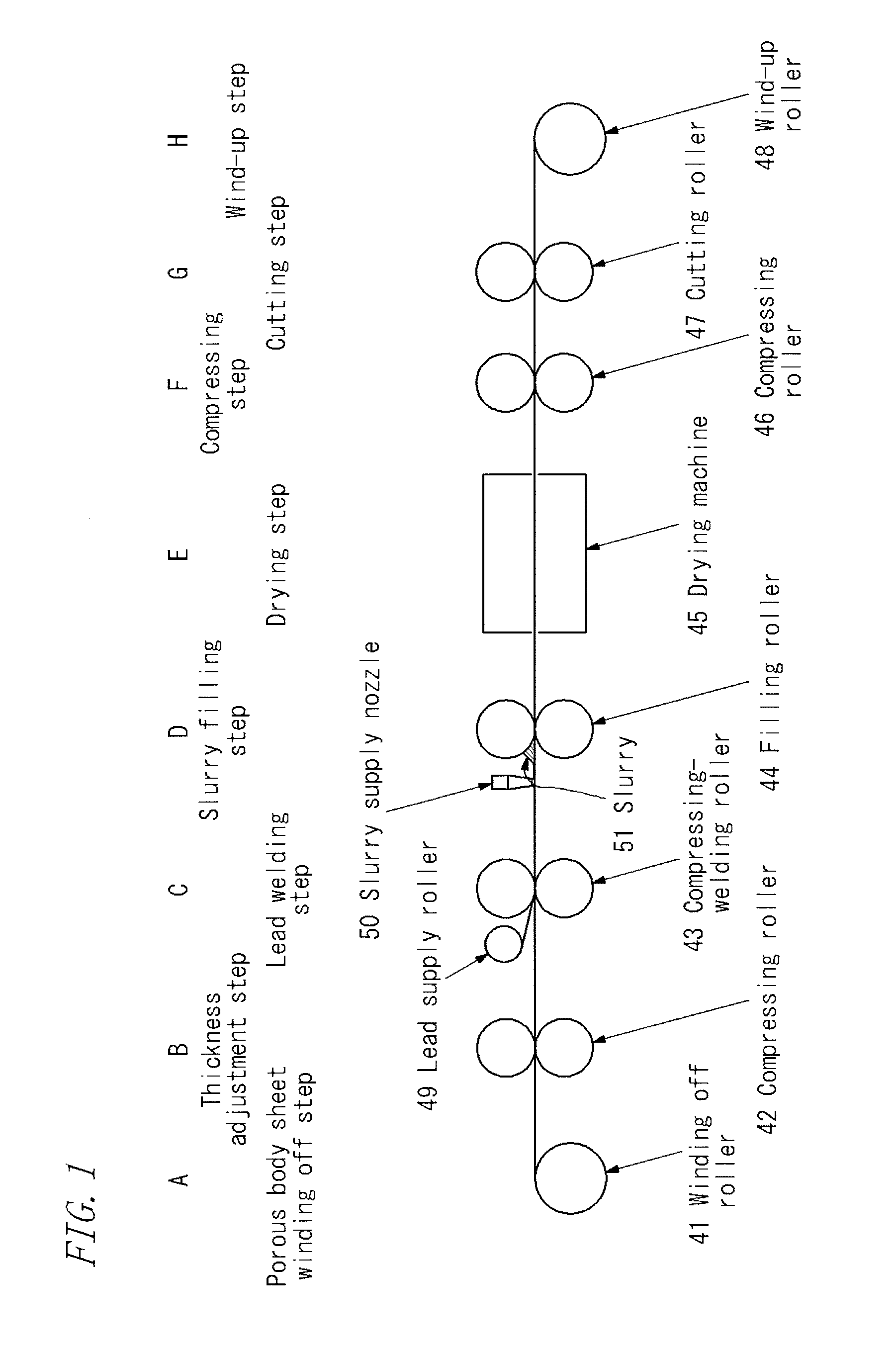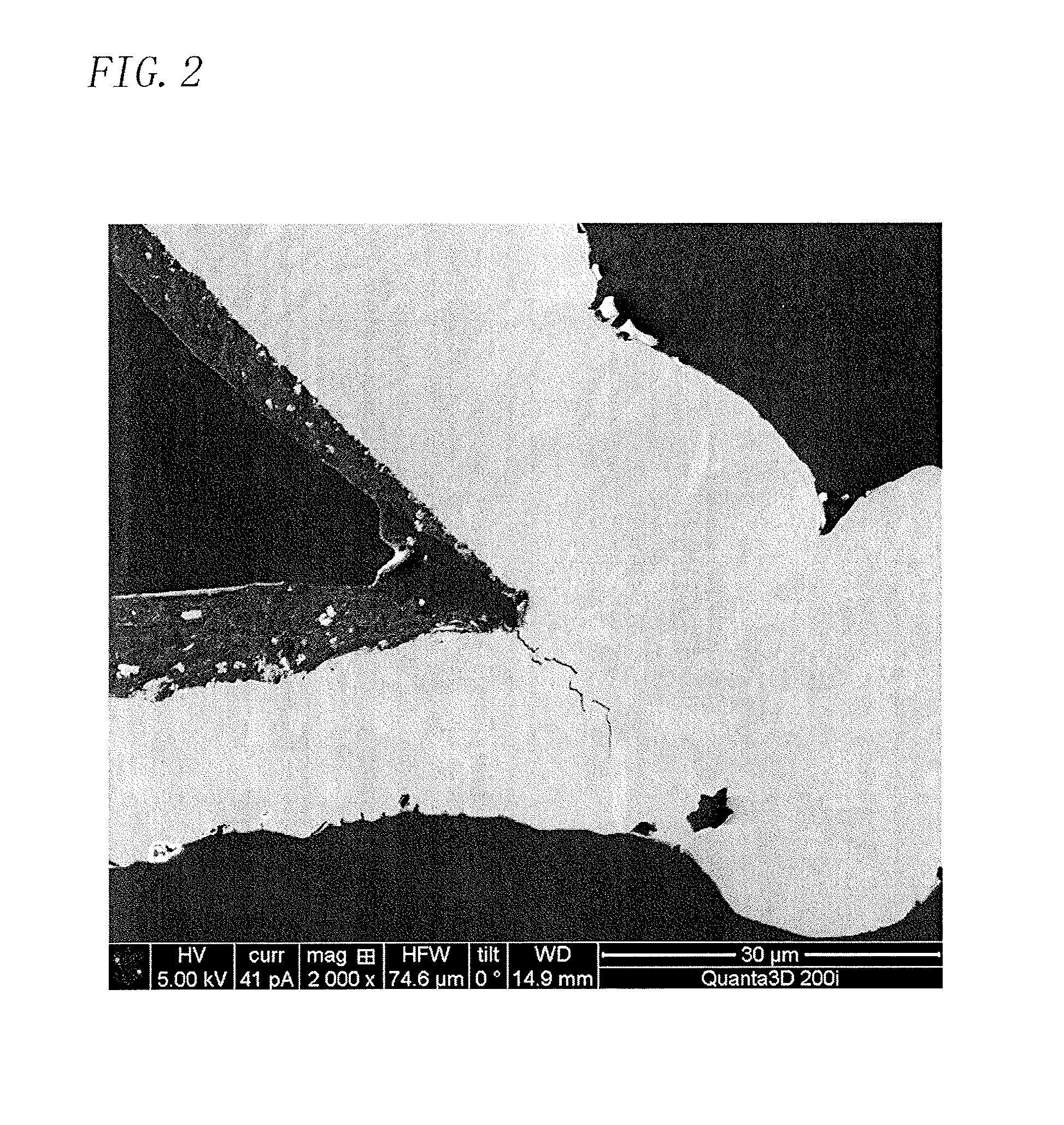Three-dimensional network aluminum porous body, electrode using the aluminum porous body, and nonaqueous electrolyte battery, capacitor and lithium-ion capacitor with nonaqueous electrolytic solution, each using the electrode
- Summary
- Abstract
- Description
- Claims
- Application Information
AI Technical Summary
Benefits of technology
Problems solved by technology
Method used
Image
Examples
example 1
Formation of Conductive Layer
[0151]A urethane foam having a porosity of 95%, about 46 pores (cells) per inch, a pore diameter of about 550 μm, and a thickness of 1 mm was prepared as a resin molded body and was cut into a 100 mm×30 mm square. A film of aluminum was formed on the surface of the polyurethane foam in a weight per unit area of 10 g / m2 by sputtering to form a conductive layer.
(Molten Salt Plating)
[0152]The urethane foam having a conductive layer formed on the surface thereof was loaded as a piece of work in a jig having an electricity supply function, and then the jig was placed in a glove box, the interior of which was adjusted to an argon atmosphere and low moisture (a dew point of −30° C. or lower), and was dipped in a molten salt aluminum plating bath (33 mol % EMIC-67 mol % AlCl3) at a temperature of 40° C. The jig holding the piece of work was connected to the cathode of a rectifier, and an aluminum plate (purity 99.99%) of the counter electrode was connected to th...
example 2
[0168]An aluminum porous body was obtained in the same manner as in Example 1 except for plating the piece of work by applying a direct current at a current density of 7.2 A / dm2 for 90 minutes in the molten salt plating of Example 1 to form 280 g / m2 of an aluminum-plated layer on the surface of the urethane foam.
[0169]The tensile strength of the obtained aluminum porous body was measured in the same manner as in Example 1 to find that it was 1.2 MPa. Further, the average crystal grain size was 2 μm and the carbon content was 0.9 g / m2.
example 3
[0170]An aluminum porous body was obtained in the same manner as in Example 1 except for employing the following method as a method of conductive treatment in Example 1.
(Method of Conductive Treatment)
[0171]One hundred g of carbon black, which is amorphous carbon having a particle diameter of 0.01 to 0.2 μm, was dispersed in 0.5 L of a 10% aqueous acrylic ester-based resin solution to prepare a sticky coating material in this ratio. Next, a conductive treatment was performed by continuously immersing a porous resin sheet in the above-mentioned coating material, squeezing the porous resin sheet with a roller and drying the sheet to form a conductive coating layer on the surface of the three-dimensional network resin.
[0172]The tensile strength of the obtained aluminum porous body was measured in the same manner as in Example 1 to find that it was 0.5 MPa. Further, the average crystal grain size was 2 μm and the carbon content was 10 g / m2.
[0173]The present invention has been described ...
PUM
| Property | Measurement | Unit |
|---|---|---|
| Grain size | aaaaa | aaaaa |
| Grain size | aaaaa | aaaaa |
| Pressure | aaaaa | aaaaa |
Abstract
Description
Claims
Application Information
 Login to View More
Login to View More - R&D
- Intellectual Property
- Life Sciences
- Materials
- Tech Scout
- Unparalleled Data Quality
- Higher Quality Content
- 60% Fewer Hallucinations
Browse by: Latest US Patents, China's latest patents, Technical Efficacy Thesaurus, Application Domain, Technology Topic, Popular Technical Reports.
© 2025 PatSnap. All rights reserved.Legal|Privacy policy|Modern Slavery Act Transparency Statement|Sitemap|About US| Contact US: help@patsnap.com



